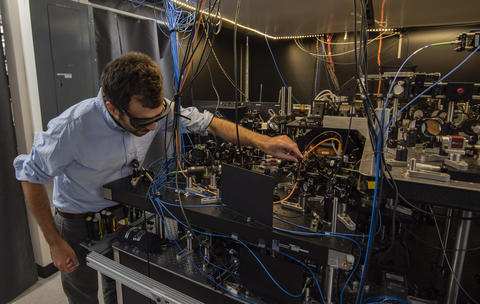
Researchers at JILA, a joint research institute operated by the National Institute of Standards and Technology (NIST) and the University of Colorado Boulder, have demonstrated a novel atomic clock design that combines near-continuous operation with strong signals and high stability.
The new clock is an array of up to 10 strontium atoms confined individually by 10 optical tweezers, which are created by an infrared laser beam. It operates at optical frequencies, which are much higher than current time standards based on microwave frequencies.
The scientists plan to use more tweezers and atoms, with a target of about 150 atoms, and to add entanglement, which could improve clock sensitivity and performance and, in a separate application, perhaps provide a new platform for quantum computing and simulation. (NIST)
